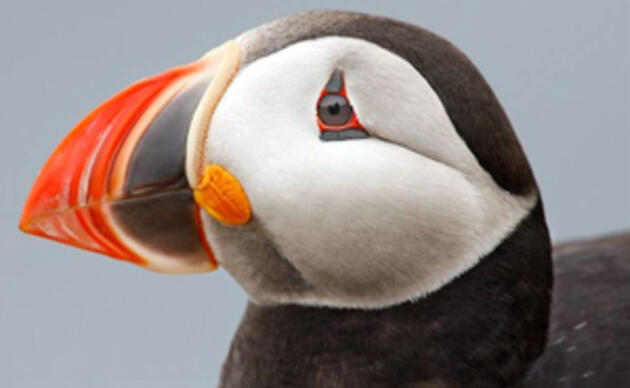
Terns
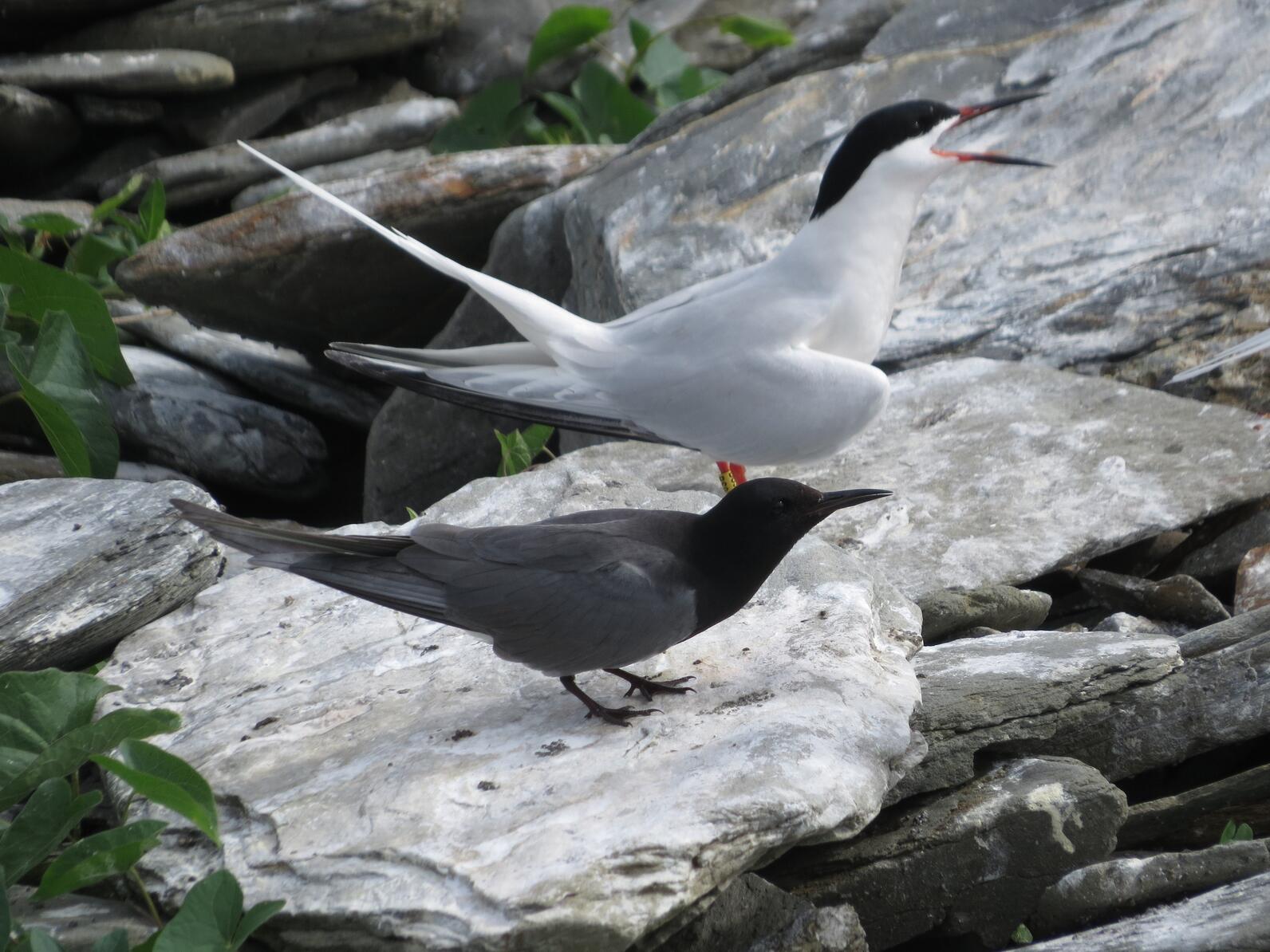
Facing heat advisory and warning conditions, it was clear islanders weren’t the only ones feeling the heat. The Jenny Island team noticed a distinct shift in feeding studies as the sea surface temperature around the island reached 62 degrees during last week’s heat wave. Snipefish and even rock gunnels were some of the oddball forage fish seen during the extreme heat.
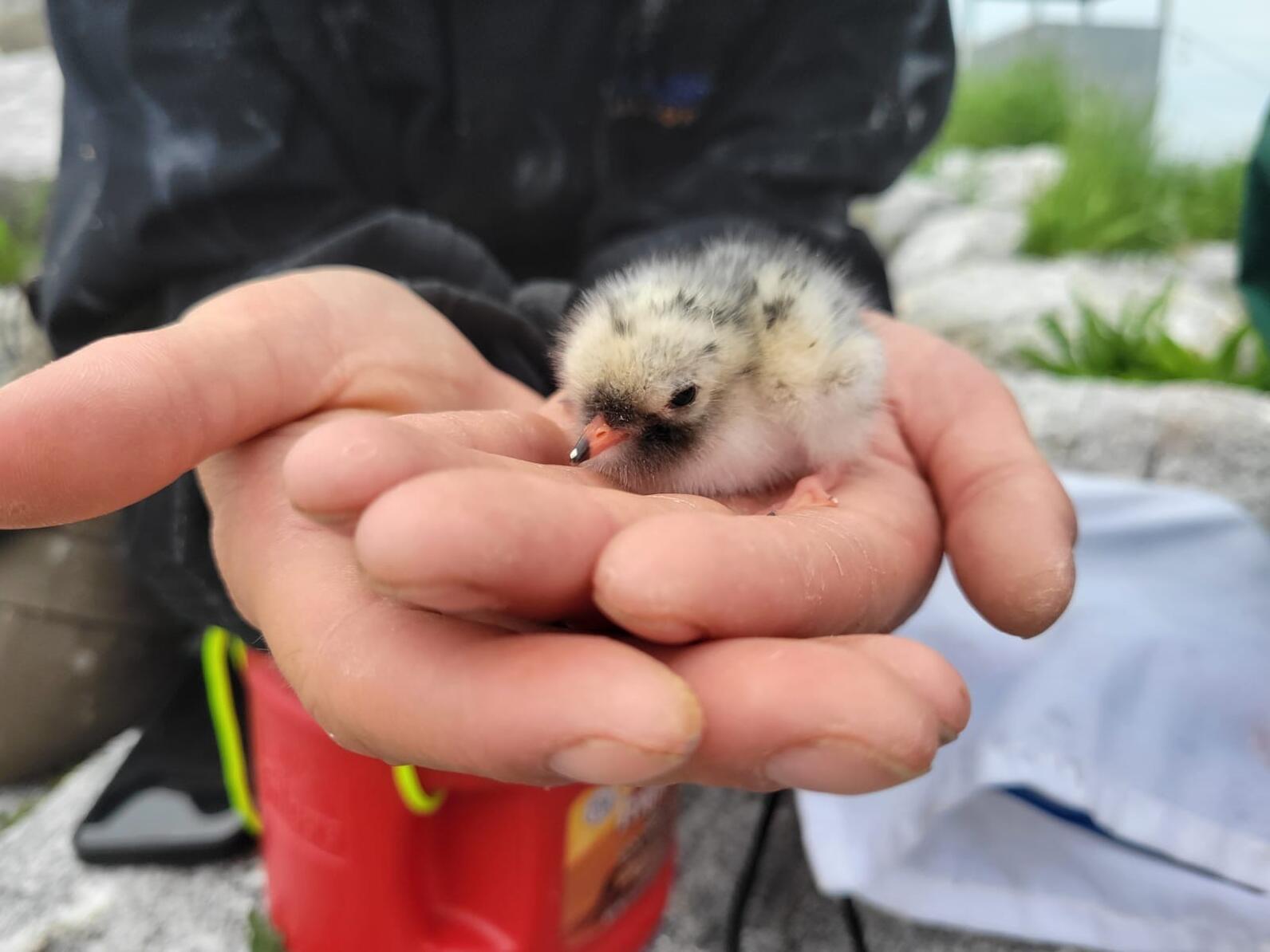
While news of new arrivals continues to trickle in, peak hatch has subsided. Researchers are shifting focus from banding to feeding and productivity studies. “Chubby” and “chunky” are buzzwords used to describe this year’s class of tern chicks. Some of these fluff balls have exceeded the 90-gram threshold (parents weigh around 120 grams)! Arctic Tern parents were working overtime keeping chicks fed, with feeding occurring four times a minute during one blind stint.
Alcids
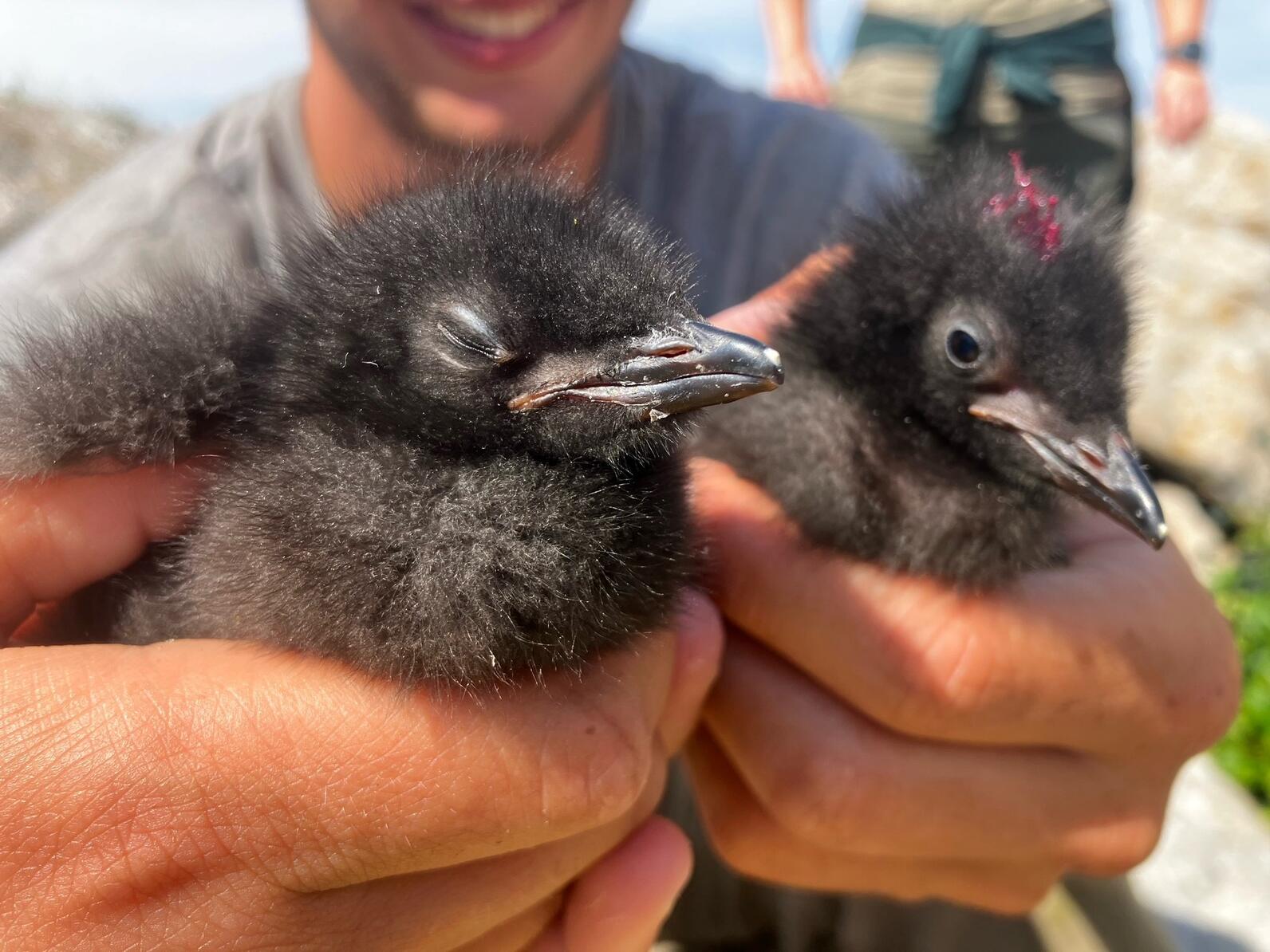
As the Seal Island team conducted puffin productivity studies, fistfuls of sootballs, more commonly referred to as pufflings, have been grubbed from burrows. Many of them newly hatched! They also found their first Black Guillemot chicks. Neighboring Matinicus Rock has had sparse internet connectivity in the early season, but has confirmed puffin, Razborbill and Common Murre chicks whose diet has largely been hake, sandlance, and smelt.
Explore.org
Ama, this season’s Puffin Burrow cam chick, is getting bigger and more adventurous in the burrow. Thanks to daily fish feedings by Millie and Willie, which have been reaching an upward of 8 tripsdeliveries a day, this precocious puffling has grown daring enough to try and peek outside the burrow’s several openings. This past week, viewers watched with bated breath as a large piece of seaweed garnish got stuck in Ama’s throat (soon cleared, however!) and observed burrow defense behaviors from the puffin parents as exploring puffins dared to venture too close to Burrow #59.
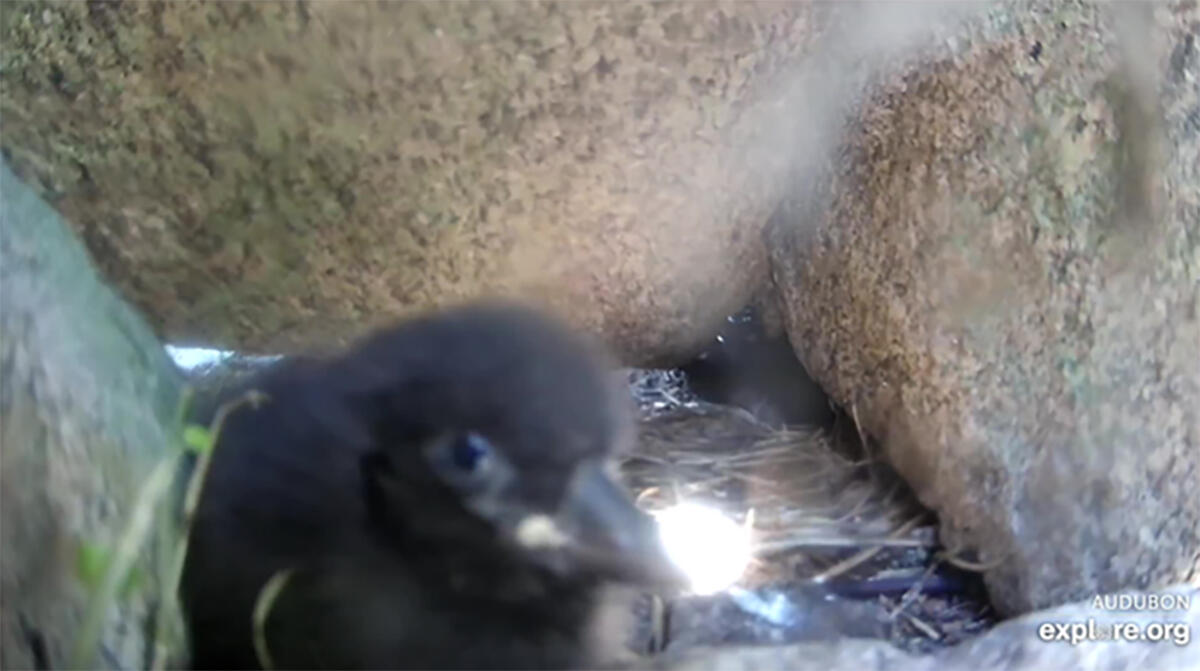
The Loafing Ledge and Boulder Berm cams have had a great showing of Atlantic Puffins and Razorbills, but they are also no short of visitors. Just this past week, keen-eyed viewers have spotted 3 Common Murres (at the same time!), 2 Herring Gulls, and 1 Laughing Gull! Common Eider mothers continue bobbing the seas with their chicks, while Song Sparrows flit around the tall vegetation. Of course, we cannot forget about all the adorable little tern chicks that have been scurrying around the Seal Island granite.

As the chickapalooza continues, follow along on explore.org to watch these adorably fluffy seabird chicks grow.
Other Birds
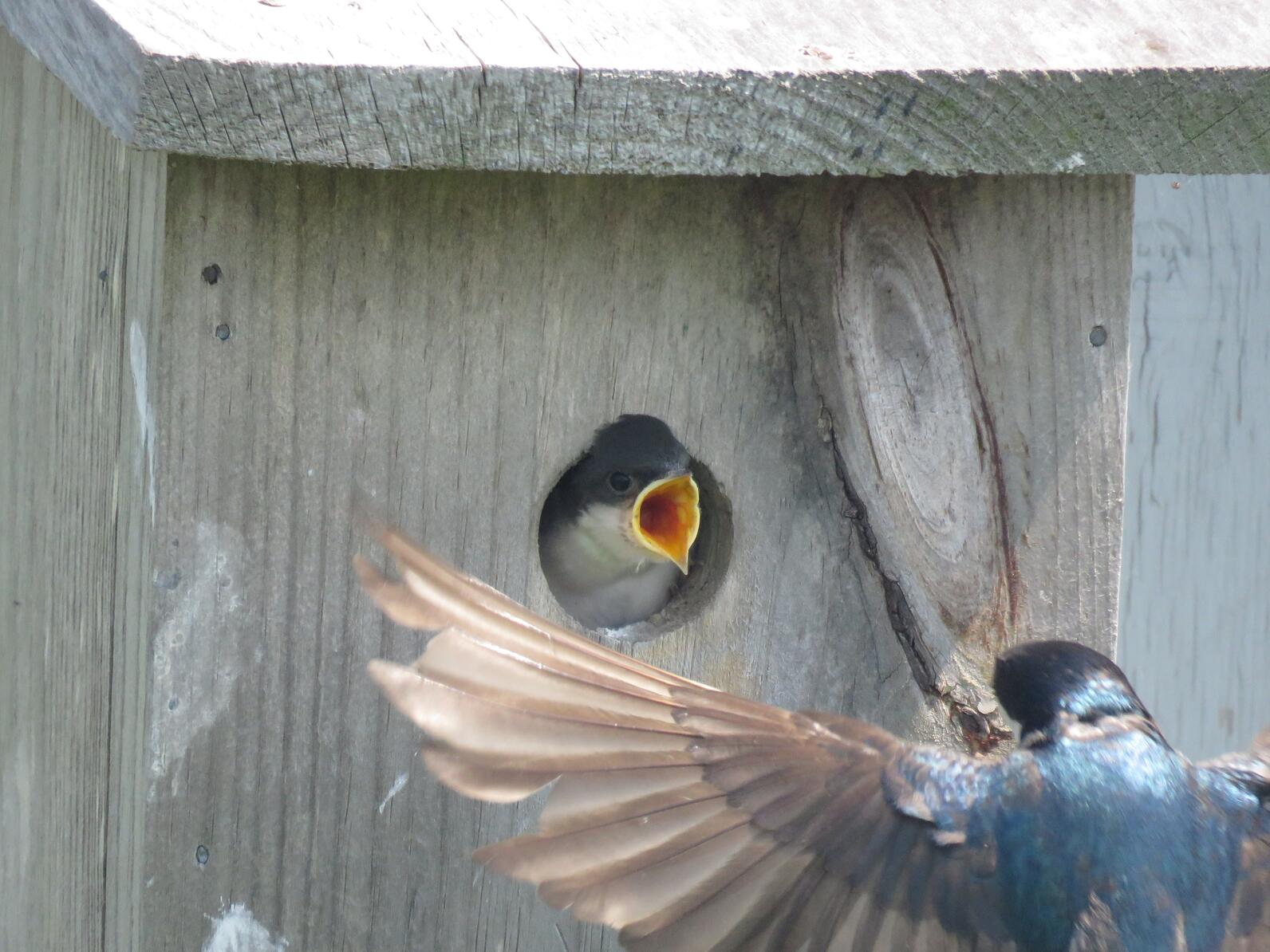
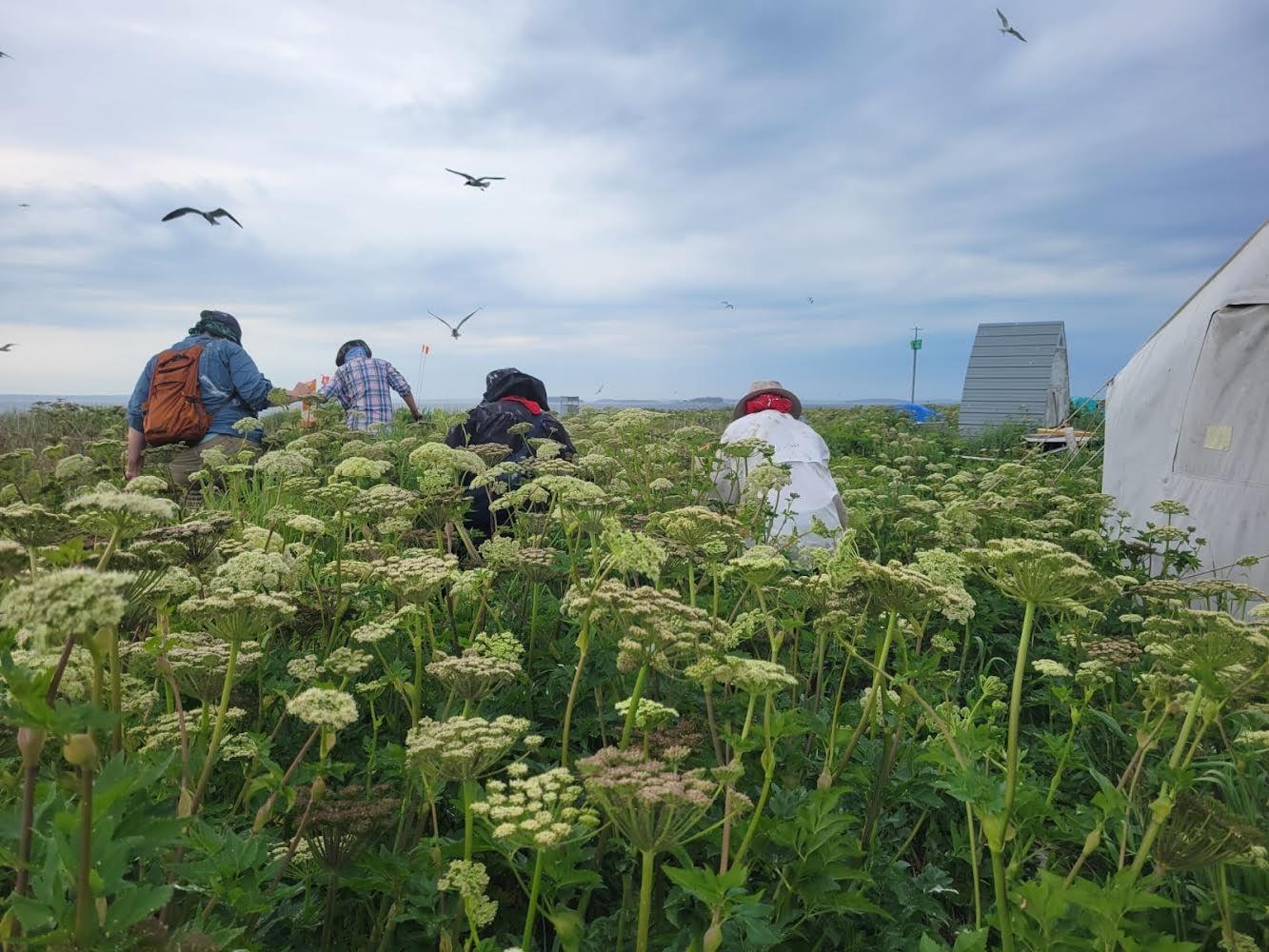
For additional news, please visit the Seabird Island News index page.
Learn about birds and take action
Adopt-A-Puffin
Adopt now and receive a Certificate of Adoption, along with a biography of "your" puffin!
Visitor Center
The Project Puffin Visitor Center (PPVC) is located at 311 Main Street in downtown Rockland, Maine. The center opened its doors officially on July 1, 2006.


